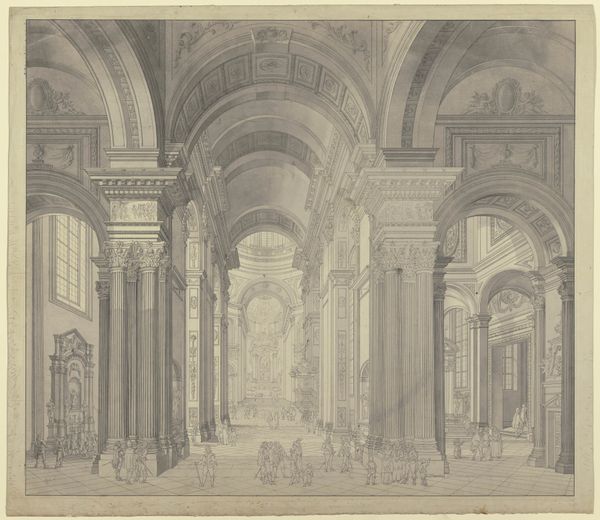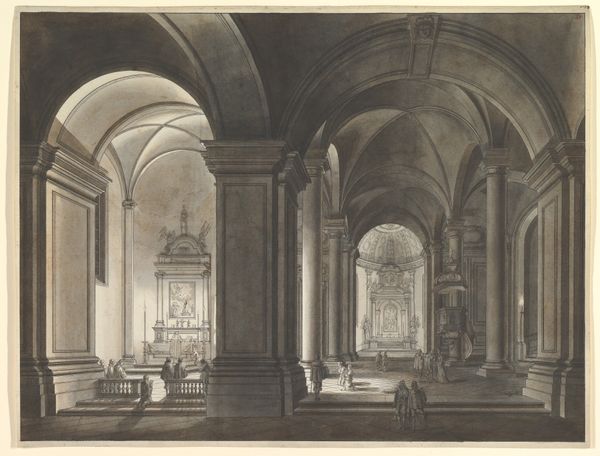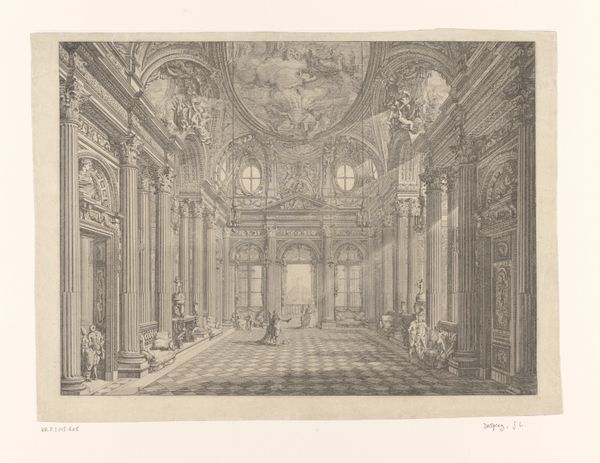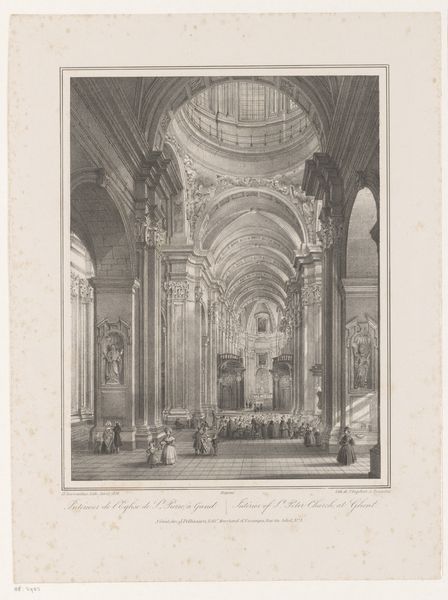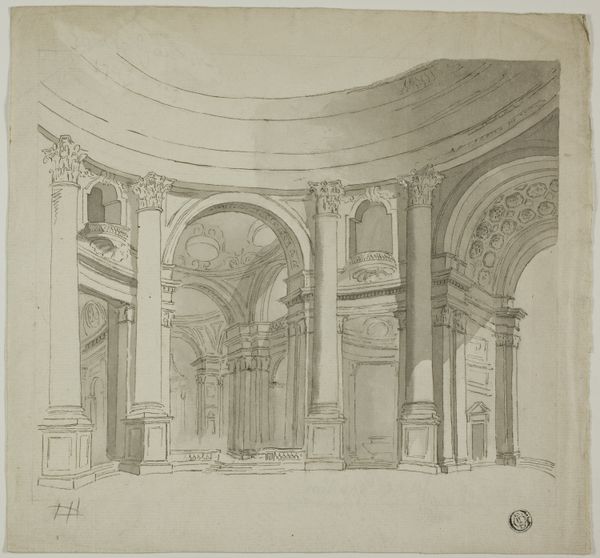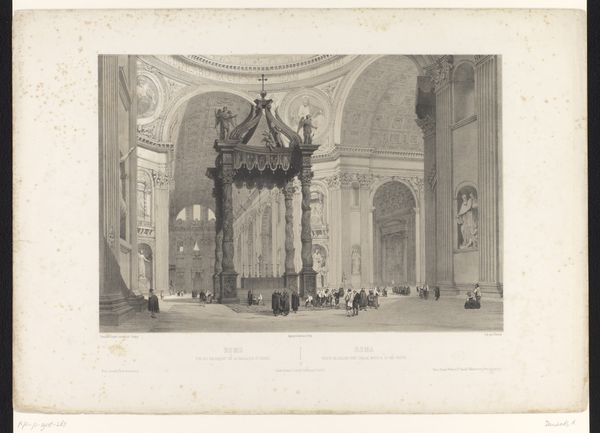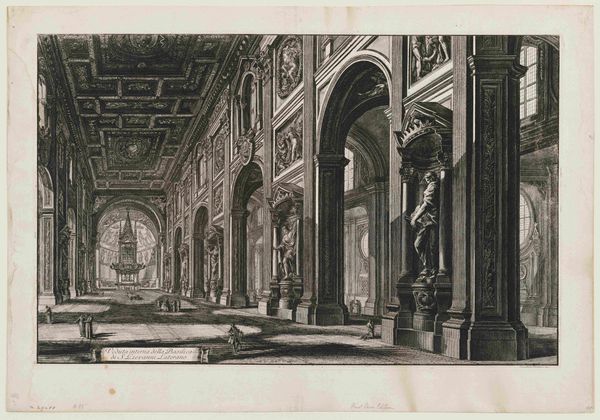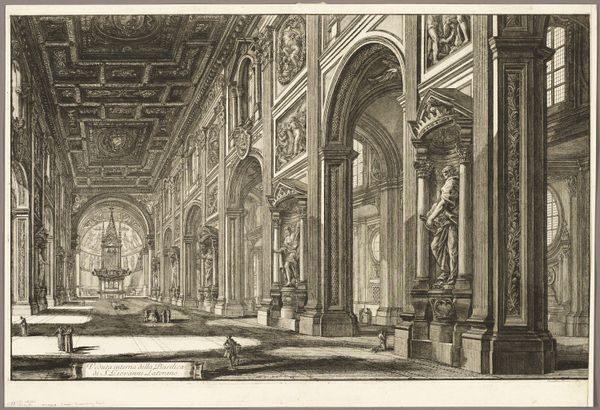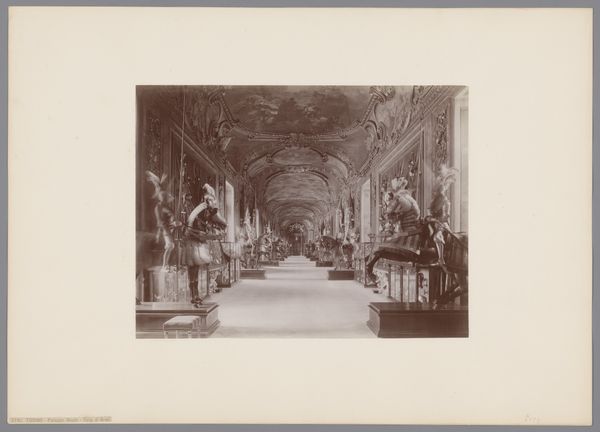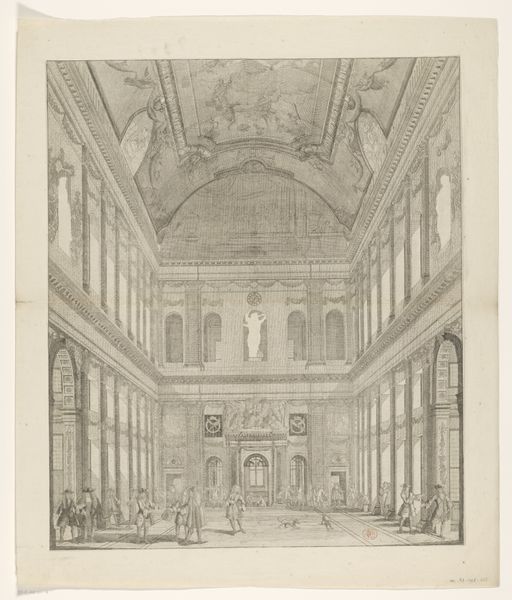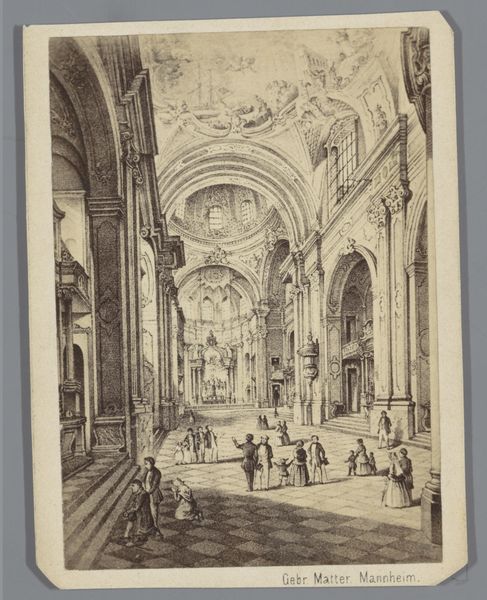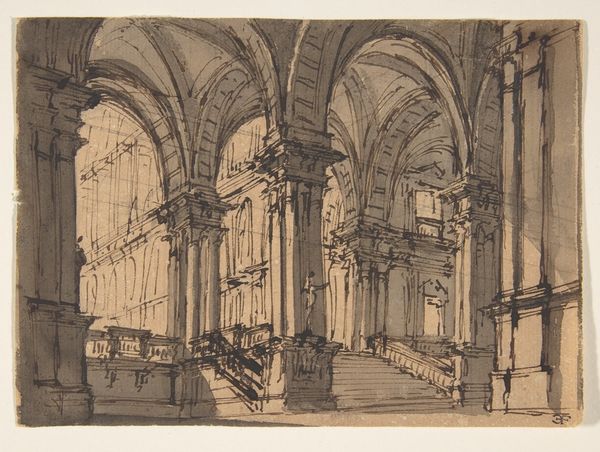
drawing, charcoal
#
drawing
#
landscape
#
charcoal drawing
#
charcoal
#
history-painting
#
academic-art
#
realism
Dimensions: height 473 mm, width 592 mm
Copyright: Rijks Museum: Open Domain
Editor: This is Walter Hilton Nash's "Gezicht op het interieur van de Santissimo Nome di Gesù in Rome," created sometime between 1860 and 1927 using charcoal. The scene depicted inside the church feels both grand and somber, and it strikes me as very academic in its detailed rendering. What captures your attention in this drawing? Curator: For me, the charcoal medium is key here. It wasn't just about rendering a scene 'realistically'. Nash is actively using the materiality of charcoal, the very process of rubbing this carbon onto paper, to evoke not just the space but perhaps also the atmosphere, even the grime, of this Roman interior. Look how the artist applies charcoal and paper: How can you describe the quality of the surface? Is it refined? Editor: It definitely feels like the technique adds texture and a bit of haziness. It's not super polished. Curator: Precisely. We tend to separate 'drawing' from 'craft', but here, I think, we see a deliberate attempt to exploit charcoal’s properties—its grittiness, its tendency to smudge. Think about the social context. Was this preparatory drawing or a sketch considered part of the final work? Consider what function it might have served outside the art world. Editor: That's interesting. It makes me wonder if Nash was more concerned with documenting a physical space than with creating something purely beautiful, although of course, the visual appeal is undeniable. I hadn't thought of the act of creating the work in the drawing medium and its social and functional contexts. Curator: Exactly! By understanding the materiality of the process, and its historic background we go beyond simply observing the surface representation and the artwork reveals more about labour and culture. Editor: I definitely learned to see the significance of Nash's medium choice and process in understanding the social and historical layers of the artwork. Thank you!
Comments
No comments
Be the first to comment and join the conversation on the ultimate creative platform.
